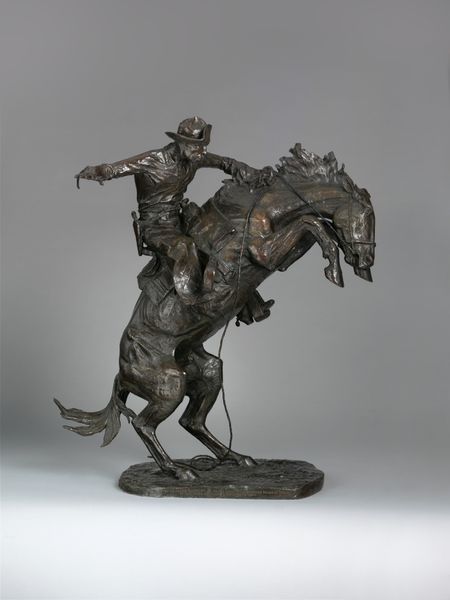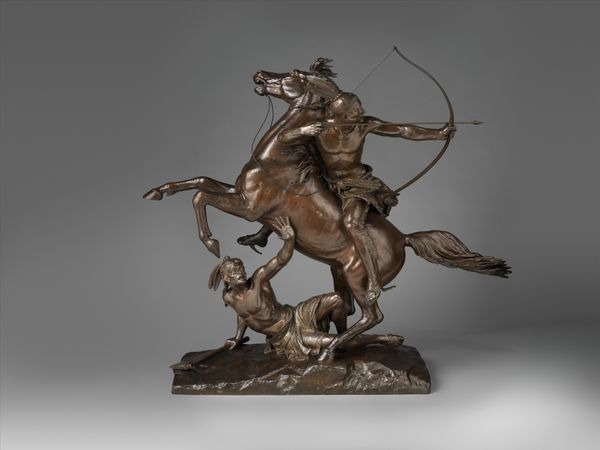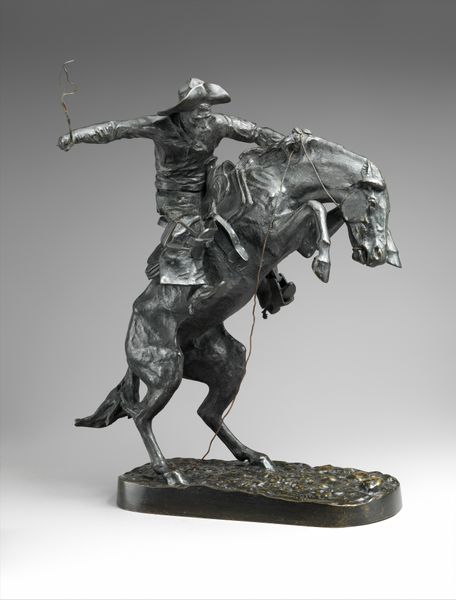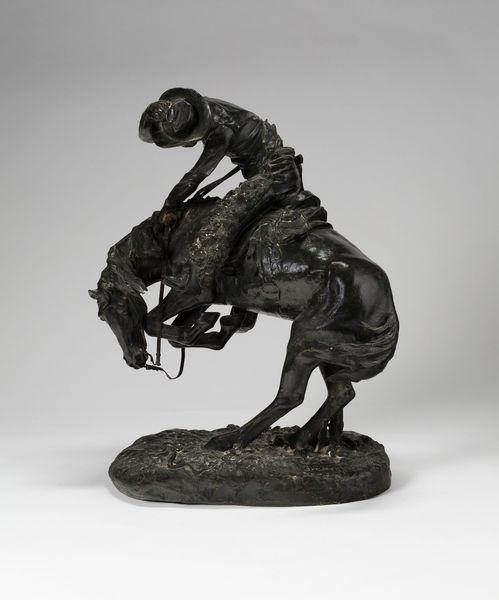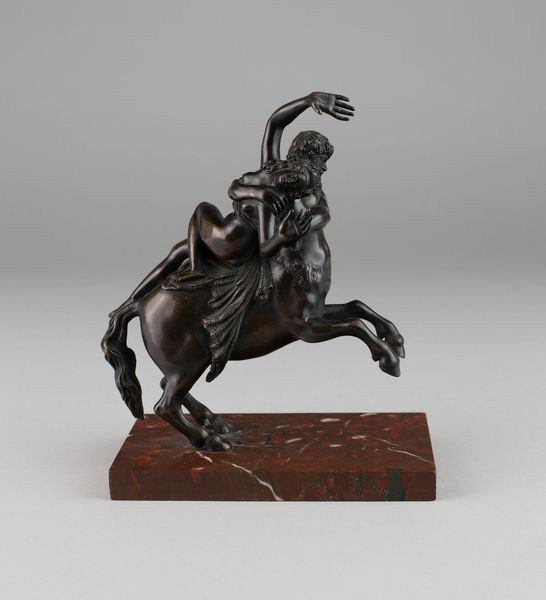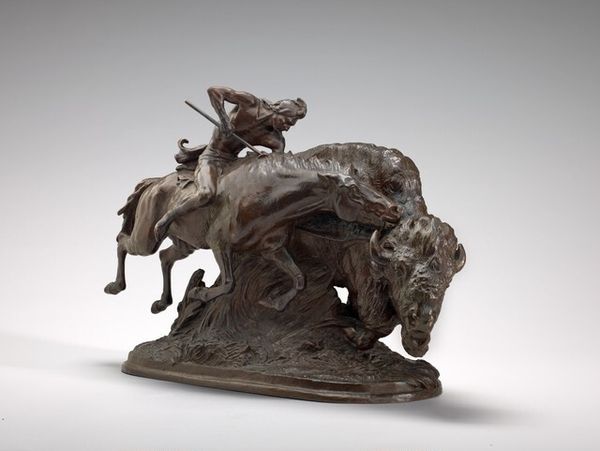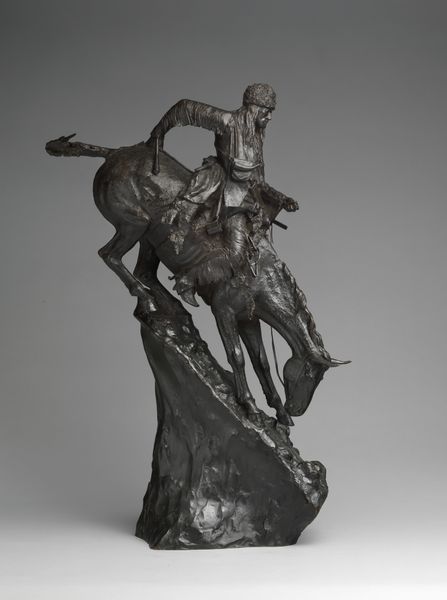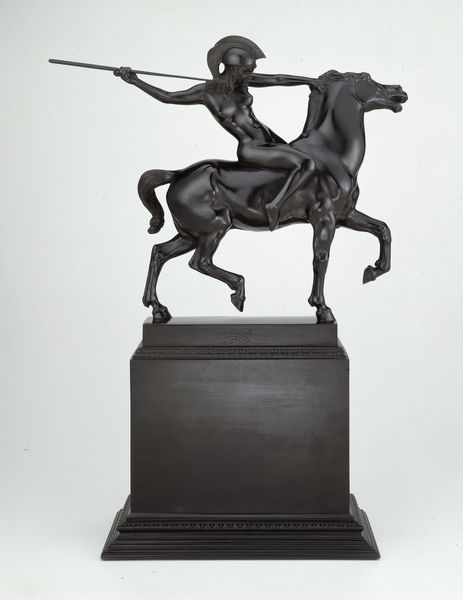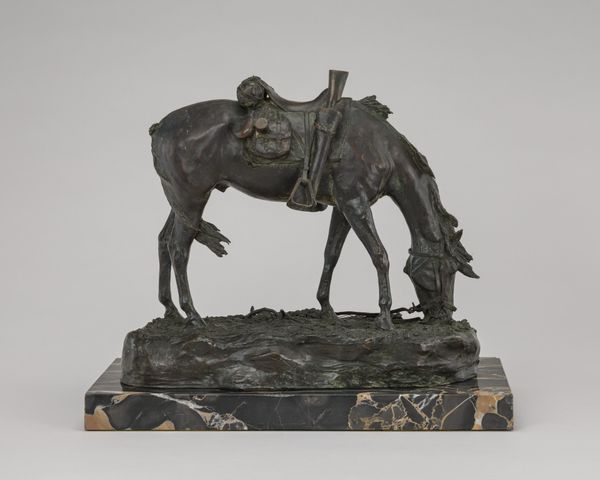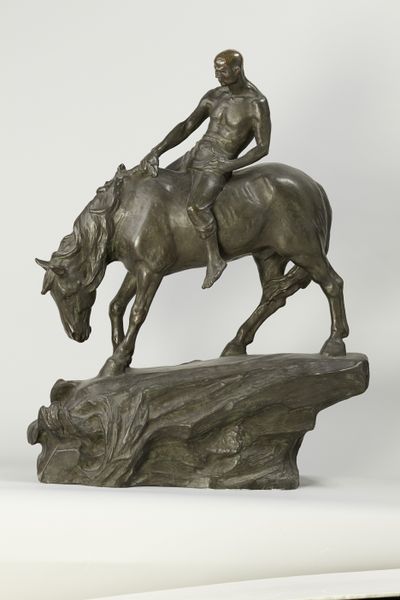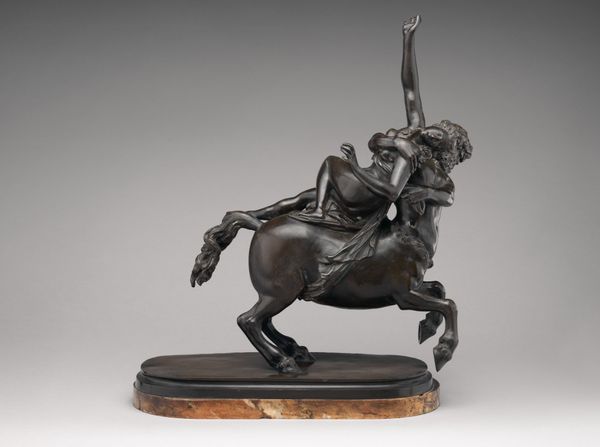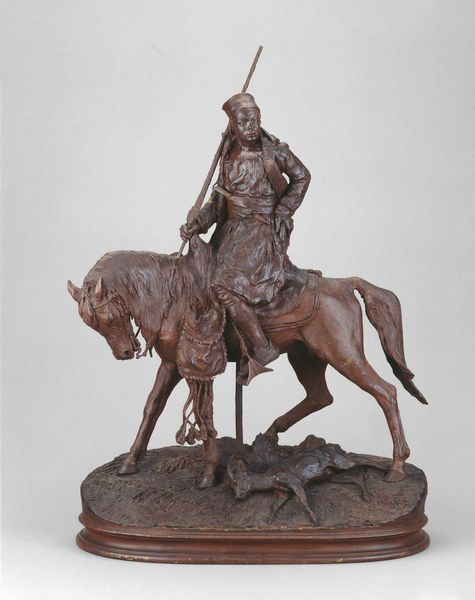
bronze, sculpture
#
animal
#
sculpture
#
landscape
#
bronze
#
figuration
#
sculpture
#
horse
#
united-states
#
history-painting
#
charcoal
#
realism
Dimensions: 61 × 39.4 × 17.8 cm (24 × 15 1/2 × 7 in.)
Copyright: Public Domain
Curator: What a dynamic piece! Frederic Remington's "The Bronco Buster," cast in bronze sometime between 1895 and 1899. Editor: It does have an undeniable energy. It's a scene of struggle, right? That bucking horse—the cowboy's clearly trying to tame something wild. Is this about manifest destiny, maybe? Curator: Precisely! The figure of the cowboy, an icon—the solitary hero dominating the Western landscape. He's mastering both the animal and, by extension, the land itself. Notice how the horse, despite its struggle, is beautifully rendered; the tension in its muscles, the flared nostrils. The cowboy, he's leaning back, a single-minded intensity in his form. It suggests mastery. Editor: That's the official reading, I suppose. But to me, it speaks more of a violent encounter, an assertion of power that has long-lasting colonial undertones. How the 'hero' relies on whip. Who defines mastery anyway? This representation of the cowboy reinforces that old, gendered trope of rugged individualism that’s so deeply embedded in American mythology, while glossing over Indigenous displacement, exploitation and ecological damage caused by the expansion. Curator: I can understand that reading of it. And to further that narrative, notice the placement of his hat which adds to the iconic identity. However, beyond those implications, this object also showcases Remington’s deep understanding of anatomy. Both the man and the horse are captured mid-action as it highlights a kind of authenticity. The dust flying, the way the muscles bulge; the drama of the moment. Remington knew the West, its figures, its harsh beauty. Editor: But isn’t that the point? "Authenticity" through whose eyes? He chose which parts of the West to immortalize. I am drawn to look closer into how images shape collective consciousness, helping legitimize acts of colonialism and erase certain narratives while amplifying others. "The Bronco Buster", when you unpack its historical framework, acts almost as a cultural product of a time characterized by violent subjugation in the West. Curator: These sorts of images can do multiple things, you know. We should always encourage conversations and challenge conventional thinking with it. Editor: Exactly! Art is a product of the era but not beyond critical analysis, interpretation, and reflection.
Comments
No comments
Be the first to comment and join the conversation on the ultimate creative platform.
